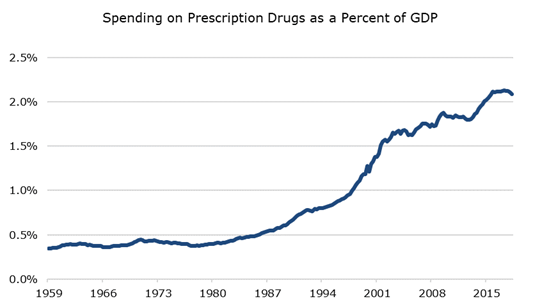From Dean Baker Austin Frakt had an interesting Upshot piece in the NYT saying that drug spending in the US began to sharply diverge from other countries in the 1990s. This actually is not very clear, since the comparison group dating back to the 1980s is small. I am actually more struck by the explosion in spending in the 1980s, with it nearly doubling as a share of GDP over the course of the decade. Note that drug spending had not been increasing at all as a share of GDP over the prior two decades. The obvious villain here is the passage of the Bayh-Dole Act in 1980, which allowed private corporations to get patent rights to government-funded research. This undoubtedly led to more investment in research and development, but it also led to a huge increase in spending the difference
Topics:
Dean Baker considers the following as important: Uncategorized
This could be interesting, too:
tom writes The Ukraine war and Europe’s deepening march of folly
Stavros Mavroudeas writes CfP of Marxist Macroeconomic Modelling workgroup – 18th WAPE Forum, Istanbul August 6-8, 2025
Lars Pålsson Syll writes The pretence-of-knowledge syndrome
Dean Baker writes Crypto and Donald Trump’s strategic baseball card reserve
from Dean Baker

Austin Frakt had an interesting Upshot piece in the NYT saying that drug spending in the US began to sharply diverge from other countries in the 1990s. This actually is not very clear, since the comparison group dating back to the 1980s is small. I am actually more struck by the explosion in spending in the 1980s, with it nearly doubling as a share of GDP over the course of the decade. Note that drug spending had not been increasing at all as a share of GDP over the prior two decades.
The obvious villain here is the passage of the Bayh-Dole Act in 1980, which allowed private corporations to get patent rights to government-funded research. This undoubtedly led to more investment in research and development, but it also led to a huge increase in spending the difference between the current 2.2 percent of GDP that we spend on drugs and the 0.4 percent we spent in 1980 is equal to $360 billion a year, roughly five times annual spending on food stamps.
